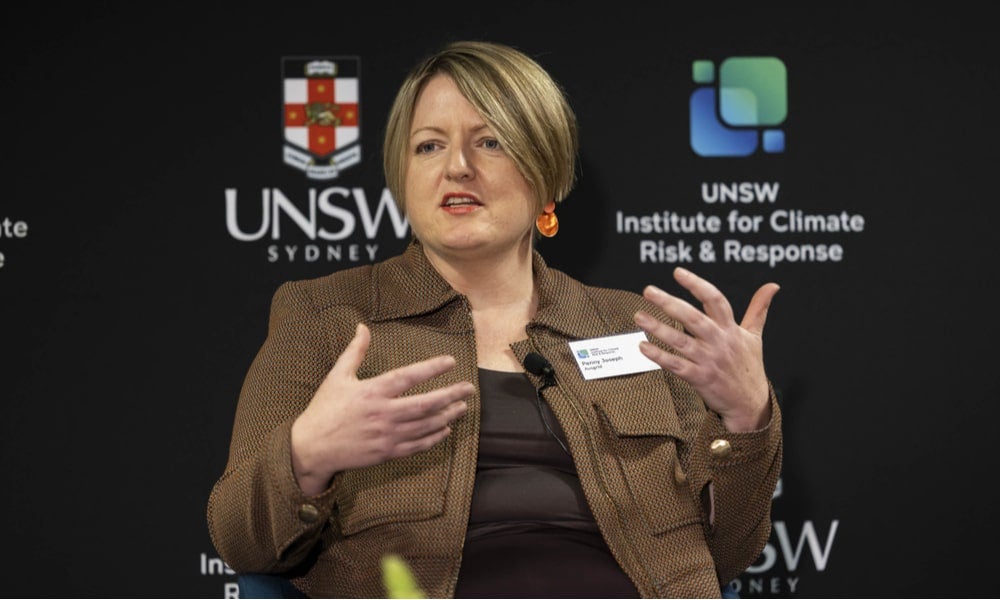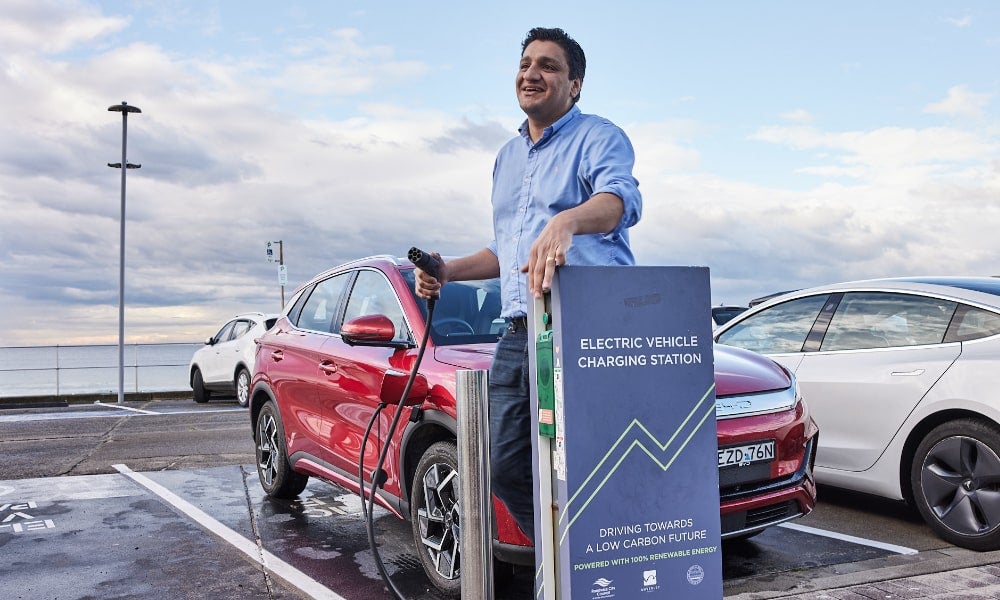The workforce skills of the future: technology and sustainability
Download The Business Of podcast on your favourite podcast platform.
Organisations need to upskill in technology and climate resilience to equip their workforces for the future, stimulate innovation and build competitive advantage
As businesses look to the future, the integration of technology and climate resilience will be critical. Leaders must adapt to these changes, fostering a skilled workforce capable of navigating the complexities of the modern business environment. There is a pressing need for businesses to adapt to these challenges to ensure sustainability and competitiveness in the coming decade.
With technology becoming an integral part of every business function, leaders need to recognise its pervasive influence in key areas such as artificial intelligence (AI). Similarly, the escalating impact of climate change necessitates a strategic focus on climate resilience, and developing roles and skills centred around climate adaptation is increasingly important. This dual focus on technology and sustainability is shaping the workforce of the future, which will require new skills and competencies across many industries.
These issues were the subject of a UNSW Business School The Business Of podcast, which pulled together some of the best insights from previous The Business Of podcast guests. Hosted by Dr Juliet Bourke, Professor of Practice in the School of Management and Governance at UNSW Business School, podcast guests included Lee Hickin, AI Technology and Policy Lead at Microsoft Australia, Penny Joseph, Director of Climate Resilience at electricity distributor Ausgrid, and Behyad Jafari, CEO of the Electric Vehicle Council.

The ubiquity of technology in business operations
A decade ago, the emphasis was on upskilling in technology. Today, the landscape has evolved significantly, according to Microsoft Australia's Hickin. “Technology is not this thing that happens as a segment of a business, it’s actually how a business runs today," he said.
This paradigm shift means that technology is no longer confined to IT departments but is integral to all business operations. Hickin illustrated this by discussing Domino's digital strategy. Domino's focused on enhancing the customer experience through technology rather than merely improving the product itself. Mr Hickin explained: “They invested in technology to make a better pizza experience, which is adjunct to the actual product, but very important.”
Businesses must also recognise that technology skills are now fundamental across all roles, he added. “Every job is a tech job," said Mr Hickin. "If you're going into finance, you want to be an actuary, you want to be a financial planner, you want to go into real estate. Whatever you want to do, you're probably going to find that tech is a core part of that.”
The rapid evolution of technology also means that leaders need to understand the basics of software development, even if they are not directly involved in programming. Mr Hickin noted, “Leaders need to understand how software is developed. But I wouldn't expect them all to be Python coders.” This underscores the importance of a general understanding of technology, which enables leaders to ask pertinent questions and make informed decisions.

Integrating climate resilience into business strategies
The next frontier for business skills is climate resilience. As consumer demand for sustainable practices grows, companies must develop new capabilities. Ms Joseph discussed the emerging roles focused on addressing climate change. “I expect that everybody will have climate resilience, climate mitigation as part of their roles," she said.
Ms Joseph's role at Ausgrid (which didn’t exist a few years ago) involves integrating climate resilience across the organisation. She emphasised the importance of multidisciplinary teams, combining technical skills with project management expertise. “Having someone that sort of really calling out, well, if we don't get this thing done today, we're not going to be there in three months' time," she said.
The challenge lies in embedding climate resilience into the organisational culture. Ms Joseph highlighted the importance of timing in transitioning new initiatives into standard business processes. “If you do it too early, then it’s probably going to fall over. But if you do it too late, then you’re taking up your time doing something that could be done by others,” she advised.
Furthermore, Ms Joseph underscored the role of education in building climate literacy across the workforce. “The job that I have is to be able to build the literacy of lots and lots of people. And I think that's the opportunity for organisations like AGSM," she said.

The purple collar workforce: bridging technology and sustainability
The car manufacturing industry serves as a case study in adapting to these dual challenges. Mr Jafari introduced the concept of the “purple collar” workforce, which blends high technical skills with high pay. This workforce is essential for the transition to electric vehicles (EVs) and sustainable manufacturing practices.
Mr Jafari explained the shift in manufacturing dynamics: “Modern-day vehicle manufacturing looks pretty different to how it used to. Today, in more modular factories, a factory in order to be stood up to sort of make sense to be built, looks more like one or 200,000 vehicles," he said.
Australia's competitive advantage lies in its skilled workforce. “People want higher paying jobs. So can you keep educating more and more technicians?" Mr Jafari asked. "Can you keep educating more and more engineers? That's a place where we compete very strongly.”
However, he acknowledged the inertia that businesses face in innovation. “Innovating is really difficult and really risky. You know, we have to do all of this other work that may not make any money for us at all,” said Mr Jafari, who explained that the challenge for executives is to balance immediate operational success with long-term innovation to stay competitive.
Subscribe to BusinessThink for the latest research, analysis and insights from UNSW Business School
Four key takeaways for business leaders
- Integrate technology across all roles: Recognise that technology skills are now fundamental in every job. Ensure that your workforce is equipped with the necessary digital skills to stay competitive.
- Develop climate resilience: Embed climate resilience into your business strategy. Foster multidisciplinary teams and ensure that climate mitigation is part of every role in your organisation.
- Embrace the purple-collar workforce: Invest in upskilling your workforce to meet the demands of modern manufacturing and sustainable practices. Focus on creating high-skill, high-pay jobs to leverage your competitive advantage.
- Innovate to stay competitive: Balance immediate business operations with the need for long-term innovation. Understand that while innovation is risky, it is essential for maintaining competitiveness in a rapidly changing market.
